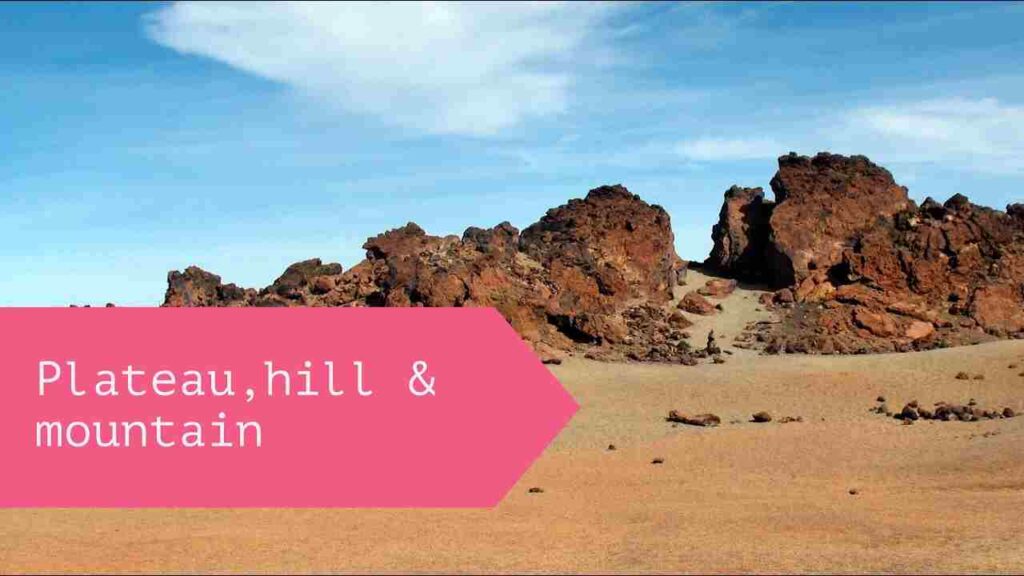
Understand the TEN Difference between Mountain and Plateau
Welcome, fellow knowledge-seeker! Today, we embark on a journey to unravel the enigmatic difference between mountain and plateau. Join me as we explore their contrasting characteristics and unlock the secrets hidden within their majestic landscapes.
Difference between mountain and plateau
Both mountains and plateaus are notable landforms that are frequently present in areas with a variety of topography. Although they have some similarities, they also differ in a number of ways. Ten difference between mountain and plateau are listed below:
Elevation: Mountains are much higher than plateaus in elevation. They rise dramatically, frequently exceeding 10,000 feet above sea level, whereas plateaus are typically more level and located at lower altitudes.
Plateaus are created by a variety of geological processes, such as erosion, volcanic activity, or uplift, whereas mountains are created by tectonic activity, which results from the collision of tectonic plates.
Slopes: Plateaus typically have gentle slopes and flat terrain, whereas mountains typically have steep, rocky slopes.
Climate: Mountains typically have a cooler, wetter climate than plateaus, with features like snow-capped peaks and alpine forests being common. On the other hand, plateaus are frequently arid or semi-arid areas with little rainfall and a desert-like climate.
Biodiversity: Compared to plateaus, mountains typically have a wider variety of plants and animals. They provide habitats for a variety of plant and animal species because of their higher elevations and cooler temperatures. On the other hand, plateaus typically have fewer plant and animal species and are sparsely populated.
Accessibility: Because of their rough terrain, mountains are frequently difficult to reach, in contrast to plateaus, which are frequently easier to reach and have better transportation systems.
Human Settlement: Compared to mountains, plateaus typically have higher densities of human inhabitants. Mountains are frequently sparsely populated with small, dispersed settlements due to the harsh terrain and steep slopes.
Due to their fertile soils, plateaus are frequently used for agriculture and farming; in contrast, mountainous terrain is not as conducive to agriculture.
Also Read: Understand the Ten Difference between isothermal and adiabatic process
Water resources: Rivers, lakes, and other significant water sources originate in mountains, whereas plateaus typically have fewer water sources and may even experience drought conditions.
Area: Mountain ranges are frequently smaller geographically than plateaus. Plateaus can extend for hundreds or thousands of kilometres while mountains may only cover a small area.
Both mountains and plateaus are distinct landforms with unique properties. Plateaus are frequently easier to access, flatter, and drier than mountains, which are typically higher, steeper, and colder. Both landforms are significant contributors to the environment and offer homes to a range of plants and animals.